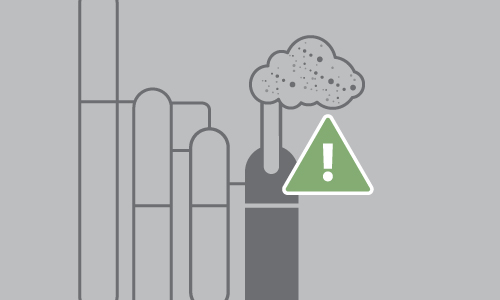When you think of your air pollution control system, it’s likely you see it as a cost of compliance—necessary to avoid fines and lawsuits. Often, companies think of it in the same way they think of quality assurance; failure is more costly than success, and avoiding failure is seen as the only benefit. However, there is a way to turn pollution control into a competitive advantage that can set your company up for long-term success.
Today, we will explore a few reasons you should think of your pollution control solution as more than a necessary cost to avoid EPA fines.
Reduced Operating Costs Give You More Leverage for the Future
Let’s face it, air pollution control products aren’t exactly the cheapest piece of machinery at your facility. No matter who you work with, prices are often similar and oxidizers are often used for decades and depreciated over the same amount of time. These products are also extremely reliable, so it’s easy to forget about everything that they do for your facility. A bit of necessary maintenance here, a few replacement components there, print out a couple reports each month, and the thing runs itself.
Knowing this, it’s likely your company hasn’t thought much of just how much it costs to run. While the right maintenance can keep the product running smoothly and efficiently over time, and proper optimization can keep operating costs low, the efficiency and cost savings are only as good as the product.
Think of it like this: a new car generally offers better gas mileage than an older car; a new computer runs faster and uses less electricity than an old one; and a new air pollution control product offers better technology and lower costs than old products. No matter how well you maintain your car, computer, or oxidizer, newer products are going to be more effective.
While initial costs may be high, a new air pollution control solution can work more efficiently, reducing operating costs and ultimately saving your business money. By reducing your operating costs, you can ultimately free up your business for expansion in the future or minimize your costs if there is a downturn.
The Tax Code Makes Machinery Expensing Easier
The last time your company purchased air pollution control products, it’s likely that the product was entered into the books and depreciated for a decade or so, recouping the costs slowly in the form of reduced taxes. However, a decade or so ago, a modification to Section 179 tax deductions made it much easier to purchase and expense equipment.
The Section 179 Tax Deduction is meant to encourage businesses to stay competitive by purchasing needed equipment, and writing off the full amount on their taxes for the current year. This is a substantial deduction, and means businesses can deduct the full cost of equipment from their 2019 taxes, up to $1,000,000. This can really make a difference to your bottom line at the end of the year.
This means that companies who purchase anywhere between $5,000 to $2,500,000 worth of equipment can treat it as an expense for the current year, recouping up to $1,000,000 of a purchase.
Your State Might Help You Out
While many manufacturers see long term benefits from the move to update their air pollution control equipment, the capital equipment costs are often prohibitive. As we discussed in our last blog, US manufacturers spend over $24 billion per year in pollution abatement and continue to bear a significant burden in environmental regulatory costs for waste disposal, wastewater treatment, and air pollution abatement.
Luckily, the EPA and many state agencies offer grants, loans and other initiatives for reducing pollution with pollution control equipment or environmental initiatives. These could help many manufacturers to enjoy the benefits of reducing pollutants while lowering their total cost of ownership even further. Following our exploration of the state-by-state resources and regulations earlier this month, we would today like to explore potential opportunities to drive down costs.
Learn more about potential resources for saving money here.
Stay Ahead of Supply and Demand
Whether it’s in the form of Design Value Range changes that get rolled out every few years, areas failing to attain pollution control numbers, or EPA updates that could take place under a different presidential administration, changes happen. When these do happen, many manufacturers realize they need to make a change and are left scrambling to update and ensure their pollution control products meet new standards.
That said, there is a limited supply of companies able to design, manufacture, install, and train users on new equipment. By staying ahead of changes, you can also stay ahead of the demand curve, reducing your costs.
Make Sustainability an Advantage
More and more companies are trying to adopt a sustainability strategy, because of a growing awareness among people about a need for better environment in the future. It has been noticed that a balance between economic, social and environmental aspects is of great significance. The benefits of a strategy to become more balanced are said to be competitive advantage and stakeholder satisfaction besides the economic, social and environmental benefits.
A recent study found that Sustainable Development is among the most important issues facing companies, and those who do not adopt this could be financially affected. Customers—especially Millennials—prefer working with companies who share their beliefs, and while “greenwashing” isn’t a viable strategy, showing your commitment to corporate social responsibility is a way to promote your business.
Make the Move: Air Pollution Control Products form The CMM Group
Not only is pollution control a necessity, the examples above show that can in fact be a competitive advantage. These are just a few of the many benefits that companies receive when they update their pollution control. The CMM Group has designed, engineered, and installed air pollution control solutions that destroy VOCs and ensure compliance when properly maintained. We invite you to download our free guide to VOC abatement and contact us for a consultation.




